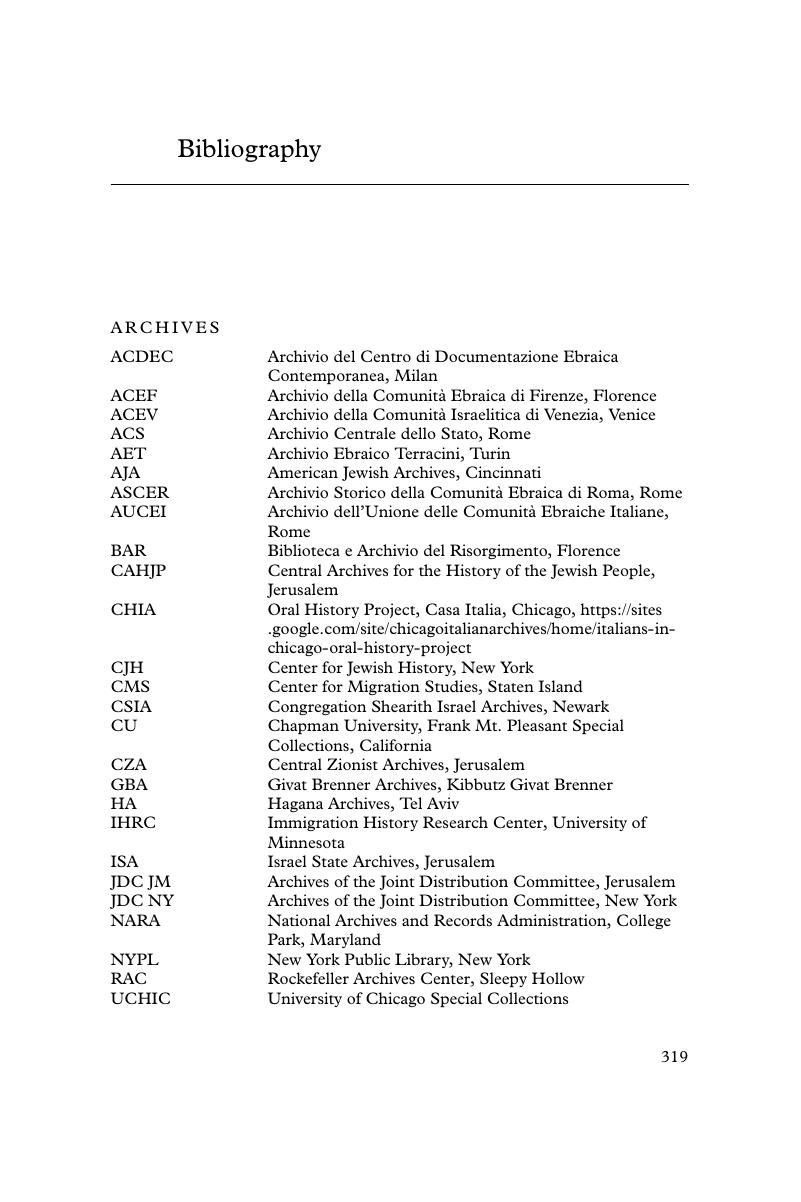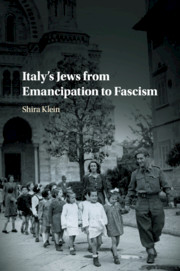Book contents
- Italy's Jews from Emancipation to Fascism
- Italy's Jews from Emancipation to Fascism
- Copyright page
- Dedication
- Contents
- Figures
- Acknowledgments
- Introduction
- 1 The Making of Italian Jewish Patriots
- 2 A Thriving Jewish Life
- 3 Five Long Years of Italian Racism
- 4 Hunting for Jews
- 5 Imagining Italy
- 6 Fur Coats in the Desert
- 7 Recovery and Revival
- 8 The Myth of the Good Italian
- Conclusion
- Notes
- Bibliography
- Index
- References
Bibliography
Published online by Cambridge University Press: 28 December 2017
- Italy's Jews from Emancipation to Fascism
- Italy's Jews from Emancipation to Fascism
- Copyright page
- Dedication
- Contents
- Figures
- Acknowledgments
- Introduction
- 1 The Making of Italian Jewish Patriots
- 2 A Thriving Jewish Life
- 3 Five Long Years of Italian Racism
- 4 Hunting for Jews
- 5 Imagining Italy
- 6 Fur Coats in the Desert
- 7 Recovery and Revival
- 8 The Myth of the Good Italian
- Conclusion
- Notes
- Bibliography
- Index
- References
Summary

- Type
- Chapter
- Information
- Italy's Jews from Emancipation to Fascism , pp. 319 - 350Publisher: Cambridge University PressPrint publication year: 2018

